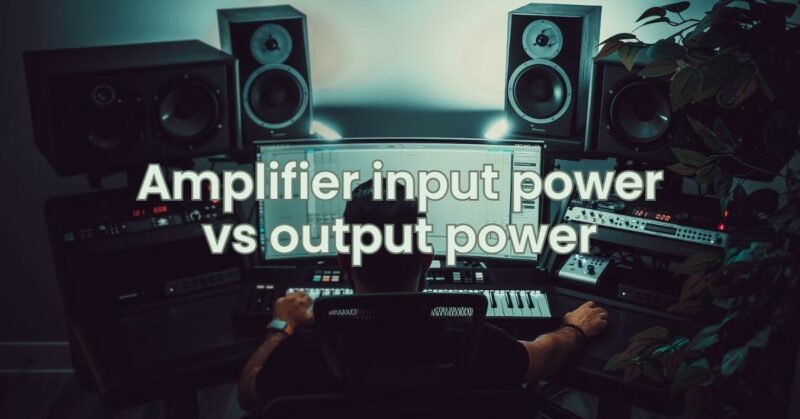When shopping for an amplifier, you may have come across the terms “input power” and “output power.” These two terms refer to different aspects of amplifier performance, and it is important to understand the difference between them in order to choose the right amplifier for your needs.
Input power is the amount of power that the amplifier needs to receive from its source in order to function properly. This power is typically measured in watts. The input power requirements of an amplifier will vary depending on the amplifier’s design and the type of source it is connected to. For example, an amplifier that is connected to a turntable will require less input power than an amplifier that is connected to a CD player.
Output power is the amount of power that the amplifier can deliver to its speakers. This power is also measured in watts. The output power of an amplifier will determine how loud it can play and how much bass it can produce. However, it is important to note that output power is not the only factor that determines sound quality. Other factors, such as the amplifier’s design and the quality of the speakers, will also play a role.
In general, you will need an amplifier with more output power if you want to play music at high volumes or if you want to reproduce deep bass frequencies. However, it is important to avoid buying an amplifier with too much output power, as this can lead to distortion and damage to your speakers.
The following table provides a general guideline for choosing an amplifier based on the size of the room and the type of music you listen to:
| Room size | Type of music | Minimum output power |
|---|---|---|
| Small | Pop, rock, or classical | 20 watts per channel |
| Medium | Hip hop, electronic, or jazz | 50 watts per channel |
| Large | Rock concerts, dance parties, or opera | 100 watts per channel |
It is also important to consider the impedance of your speakers when choosing an amplifier. The impedance of a speaker is a measure of its electrical resistance. Speakers with lower impedance will require more power to drive them. If you are not sure what the impedance of your speakers is, you can consult the manufacturer’s specifications.
Once you have considered all of these factors, you will be able to choose an amplifier with the right amount of input power and output power for your needs.
Here are some additional tips for choosing an amplifier:
- Read reviews: There are many online and print resources that can help you choose the right amplifier.
- Listen to different amplifiers: This is the best way to find an amplifier that sounds good to your ears.
- Consider your budget: Amplifiers can range in price from a few hundred dollars to several thousand dollars.
With a little bit of research, you can find an amplifier that will give you years of enjoyment.


